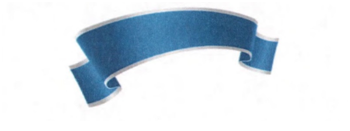
-
Hechos
Mediante solicitud de 20 de septiembre de 2012, Hartwall solicitó ante la Oficina Nacional de Patentes y Marcas de Finlandia el registro de una marca representada de la siguiente forma:
La solicitud designaba “Aguas minerales” en clase 32 e incluía la siguiente descripción: “Los colores del signo son el azul (PMS 2748, PMS CYAN) y el gris (PMS 877)”. Por otra parte, a raíz de una decisión previa de la Oficina finlandesa, Hartwall precisó que solicitaba el registro de la marca en cuestión como marca de color.
Mediante resolución de 5 de junio de 2013 la Oficina desestimó la solicitud de Hartwall por falta de carácter distintivo, estableciendo que no puede permitirse el registro de un derecho exclusivo sobre determinados colores sin que haya una prueba fundada de que los colores han adquirido carácter distintivo gracias a un uso extenso y duradero para los productos solicitados.
Hartwall presentó recurso ante el markkinaoikeus (Tribunal de lo Mercantil y de los Contratos Públicos) que fue igualmente desestimado. Finalmente recurrió ante el Korkein hallinto-oikeus (Tribunal Supremo de lo Contencioso-Administrativo), que decidió suspender el procedimiento para plantear al TJ esencialmente las siguientes cuestiones prejudiciales: (i) Si es relevante que una marca se solicite como marca figurativa o como marca de color y (ii) Si ello fuese relevante: ¿La marca debe registrarse como marca de color conforme a la solicitud, con independencia de su representación como imagen, o solo puede registrarse como marca figurativa?
-
Pronunciamientos
En relación con la primera cuestión prejudicial el Tribunal estableció en primer lugar que para valorar el carácter distintivo de una marca de color o una marca figurativa debe procederse a un examen in concreto, teniendo en cuenta todas las circunstancias pertinentes del caso, incluyendo cuando proceda el uso que se haya realizado de dicho signo. De esta forma, recuerda el TJ que los criterios de apreciación del carácter distintivo de las marcas de color son los mismos que los aplicables a los demás tipos de marcas, a pesar de que para este tipo de marcas las dificultades puedan ser mayores.
En consecuencia, el TJ resalta que no es posible reconocer el carácter distintivo de una marca de color únicamente por el uso que se realice del signo y responde que la calificación como “marca de color” o como “marca figurativa” sí constituye un elemento pertinente -entre otros- para determinar su carácter distintivo, pero no dispensa a las oficinas de realizar un análisis in concreto del mismo.
La segunda cuestión prejudicial versa sobre la discrepancia entre la calificación realizada por Hartwall del signo (marca de color) y la marca solicitada (representada por una imagen en color de contornos delimitados).
El TJ responde a dicha cuestión claramente, estableciendo que cuando exista una contradicción entre el signo solicitado y la calificación dada a la marca por el solicitante que impida la determinación exacta del objeto y del alcance de la protección solicitada, la autoridad competente deberá denegar el registro de dicha marca por falta de claridad y precisión de la solicitud.
-
Comentario
La presente sentencia es un ejemplo más de los problemas que puede encontrar el solicitante de una marca de color para obtener la protección del signo solicitado, en este caso por lo que respecta a la forma de representar y calificar el signo.
Aunque la sentencia trata las divergencias entre la representación de marcas de color y marcas figurativas, se trata de una sentencia relevante pues la conclusión del TJ podría extrapolarse a otros supuestos en los cuales existen discrepancias entre la marca representada y la calificación del tipo de marca (por ejemplo: marcas tridimensionales).
Se destaca asimismo la matización realizada por el TJ recordando que, aunque los criterios para examinar el carácter distintivo deben ser los mismos para todos los tipos de marcas, dicho examen adquiere una especial importancia en las marcas de color. Ello se debe a los privilegios conferidos al titular de una marca de color dado que éste ostentará en el mercado un cierto monopolio sobre el uso de un color para determinados productos o servicios. Por ello, como establece el TJ, a la hora de otorgar la protección sobre una marca de color “es necesario tener en cuenta el interés general en que no se restrinja indebidamente la disponibilidad de los colores para los demás operadores que ofrecen productos o servicios del mismo tipo que aquellos para los que se solicita el registro” de lo cual se deriva la exigencia de realizar el examen in concreto de todas las circunstancias del caso.
Autor: Marta RODRÍGUEZ. Anuario Elzaburu, Edición 2019 (recopilatorio de comentarios de jurisprudencia europea en materia de Derecho de Propiedad Industrial e Intelectual que realiza Elzaburu).
Sentencia del TJUE de 27 de marzo de 2019, EDJ 2019 proveniente de la base de datos NEO. Más información y posibilidad de probar gratuitamente el producto en https://www.efl.es/catalogo/bases-de-datos-juridicas-neo
Versión en inglés:
Criteria for assessing the distinctiveness of colour marks and the importance of correctly determining the type of mark. Judgment of the Court of Justice of 27 March 2019, Hartwall (C-578/17).
1. Background. In an application filed on 20 September 2012, Hartwall sought to register, with the Finnish Intellectual Property Office, a trademark represented as follows:
The application covered ‘mineral waters’ in class 32 and included the following description: “The colours of the sign are blue (PMS 2748, PMS CYAN) and grey (PMS 877)”. Moreover, following a preparatory decision of the Finnish Office, Hartwall specified that it was applying for registration of the mark in question as a ‘colour mark’.
In a decision dated 5 June 2013, the Office rejected Hartwall’s application on the grounds that it was devoid of distinctive character, holding that an exclusive right in certain colours cannot be granted unless it is established that the colours have acquired distinctive character through long-term significant use in respect of the goods claimed.
Hartwall filed an appeal before the “markkinaoikeus” (Finland’s Mercantile Court), which was likewise dismissed. Hartwall appealed the decision to the “Korkein hallinto-oikeus” (Finland’s Supreme Administrative Court), which decided to suspend the proceedings and refer the following questions to the Court of Justice for a preliminary ruling: (i) Is it of relevance whether a trademark is filed as a figurative mark or as a colour mark? (ii) If this is indeed of relevance, is the trademark to be registered as a colour mark in accordance with the trademark application, regardless of its representation as a drawing, or can it be registered only as a figurative mark?
2. Findings. In relation to the first question, the Court establishes first of all that in order to assess the distinctive character of a colour mark or a figurative mark, it is necessary to carry out an examination by reference to the actual situation, taking account of all the circumstances of the case, including any use which may have been made of the sign. The Court of Justice thus points out that the criteria for assessing the distinctive character of colour marks are the same as those applicable to other categories of marks, even if the potential difficulties in establishing the distinctive character of certain categories of marks may be greater.
Consequently, the Court highlights that it is not possible to establish the distinctive character of a colour mark only on account of the use made of the same, and it states in answer to the first question that the applicant’s classification of the sign as a ‘colour mark’ or as a ‘figurative mark’ is a relevant factor, among others, for the purpose of determining whether it is distinctive, but it does not release the trademark authority from its obligation to carry out an assessment by reference to the actual situation of the sign in question.
The second question referred for a preliminary ruling relates to the discrepancy between the classification of the sign given by Hartwall (colour mark) and the trademark as filed (represented by a colour drawing with defined contours).
The Court of Justice provides a clear answer to the question, finding that where there is an inconsistency between the sign as filed and the classification of the sign given by the applicant which makes it impossible to precisely determine the subject matter and the scope of protection sought, the competent authority must refuse the registration of the mark on account of the application’s lack of clarity and precision.
3. Remarks. This judgment is yet another example of the problems in obtaining protection that can be encountered by applicants of colour marks, in this case with regard to the manner in which the sign is represented and the classification of the sign.
While it deals with the differences between the representation of colour marks and figurative marks, it is an important judgment, given that the Court’s conclusion could be extrapolated to other cases where there are inconsistencies between the representation of the mark and the classification of the type of mark (for example, three-dimensional marks).
It is also worth highlighting the point made by the Court that while the criteria for assessing distinctive character should be the same for all types of marks, the examination regarding distinctive character is particularly important in the case of colour marks. This is in view of the privileges afforded to the owners of colour marks, given that they will enjoy a certain monopoly in the marketplace on the use of a colour for certain goods or services. Therefore, as established by the Court of Justice, when granting protection for a colour mark, “it is necessary to have regard to the general interest in not unduly restricting the availability of colours for the other traders who offer for sale goods or services of the same type as those in respect of which registration is sought”; hence, the need to carry out the examination by reference to the actual situation, taking into account all the circumstances of the case. Marta RODRÍGUEZ
ElDerecho.com no comparte necesariamente ni se responsabiliza de las opiniones expresadas por los autores o colaboradores de esta publicación









